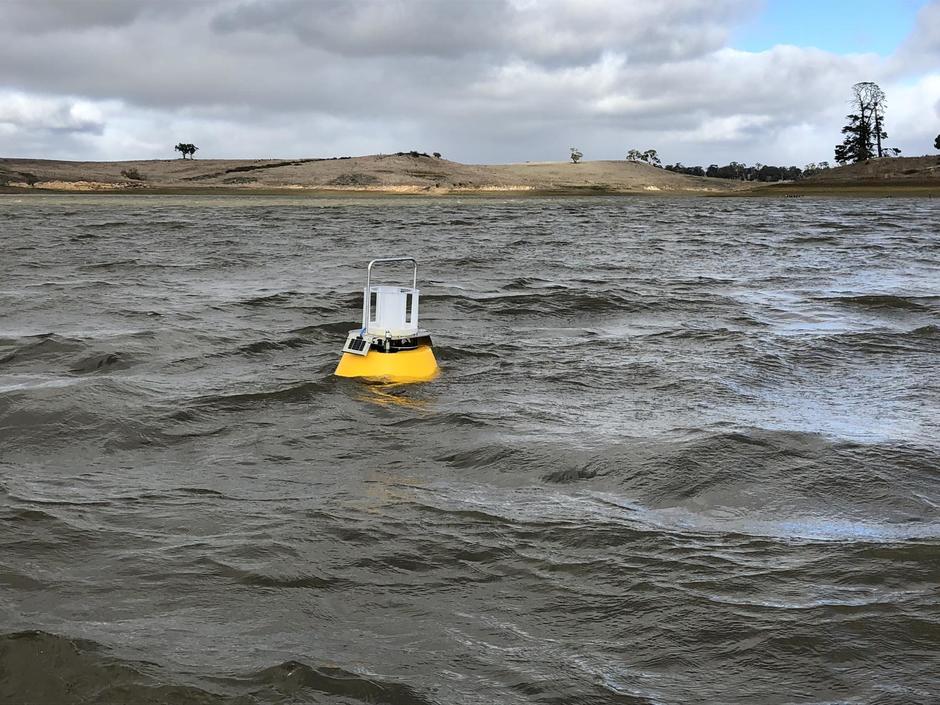3 min read
From the Menindee Lakes in New South Wales to Perth’s Swan River and Lake Tuggeranong in Canberra, algae has been blooming across the country recently.
These microorganisms are not usually visible, but in the right conditions – think hot and sunny days – they can reproduce at high rates, forming ‘blooms’ that can have huge impacts on our waterways.
Although algae produce a lot of oxygen when it’s developing, it depletes oxygen levels as it breaks down. The impact on delicate ecosystems can be extreme, as seen with the recent spate of mass fish kills over summer.
But algae isn’t just harmful to our aquatic environments. It can also affect human health, particularly when algal blooms occur in recreational swimming areas or water storages that are used as a raw water supply.
“In some cases, the algae produces toxins that can result in mild poisoning,” Veolia Project Manager Quentin Bechet states.
“In more extreme cases, some algae can generate toxins that end up reaching water treatment plants downstream … That’s the worst-case scenario.”
This is why it’s so important for water managers to detect algal blooms as early as possible.
Real-time detection
The way water authorities have traditionally monitored the presence of algae in waterways is a time-consuming (and often costly) process, which usually involves manually collecting a water sample every week or two.
“This means you know there is an algal bloom two weeks after it began,” Quentin continues.
“It’s useful to know there’s something going on, but it’s often very difficult, if not too late, to get rid of them.”
To address this problem and give water authorities the best chance to protect their water supplies, Veolia developed the SWARM buoy (see image below, right).

This is a water quality monitoring tool that continuously measures the concentration of different parameters including dissolved oxygen in a waterway and feeds this data back to water authorities in real time.
Quentin adds, “The fluctuations in dissolved oxygen is a good indicator of whether algae is present or not."
“At the start of an algal bloom you begin to see small oscillations of oxygen concentration. As the algae increases, those oscillations become bigger. The idea is as soon as we see a small oscillation, we can alert a water authority that algae are coming.”
As reservoirs that need monitoring are often quite remote, the SWARM buoy was built to be self-sufficient, with a windmill and solar panels to generate energy. It can also perform other water quality tests, such as assessing how turbid (or murky) the water is, and the organic material it contains.
“This is an indication of how healthy the water is,” Quentin states.
“When you have lots of organic material in the water it can cause bacteria to develop, which has risks for public health. This is another thing SWARM buoys can measure.”
“Time is of the essence”
Bechet says the ability to monitor waterways in real time is so important because dealing with an algal bloom comes down to early detection.
“Time is of the essence here,” he adds.
“If you know algae are coming a couple of days before a big bloom, you can take measures to counter the impact.”
This could include blocking the development of algae by using a propeller to churn the water, sending the sun-loving algae from the surface to the bottom of the reservoir, where they are deprived of light.
Other approaches include adding a low concentration of copper to the water, or flushing the water channel to get rid of the algae, but this must be handled on a case-by-case basis and always in agreement with environmental regulations.
Bechet said the most important aspect of the SWARM buoy is the role it can play in ensuring waterways across Australia are safe for people to use, whether for swimming or as a raw water source.
“Because it can predict an algal bloom it really is an essential tool for water authorities and can equip them to make better-informed decisions, respond quicker and choose the right course of action.”
To learn more about Veolia’s SWARM buoy, call us on (02) 8571 0000, or complete our online form.


